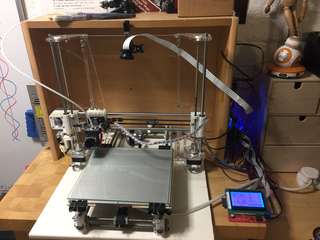Eye @ Electromagetic Fields 2024
It has been a while since I've posted anything here, so thought I would put something up about the first project I managed to take in an even vaguely finished state to Electromagnetic Fields. I first attended in 2016 and was lucky enough to be invited to the amazing Hat Village. To get a feeling for the festival I'll refer you to fellow Hat Villager Sam's excellent blog. If you've returned after reading that, I can state that yes indeed my son will be back for the next one (although it may involve more exam revision this time)!
We unsurprisingly make silly hats for Hat Village and this started as an idea by my son wanting a hat like the Las Vegas sphere. While impractical as headwear, the idea remained and grew into this. I'm going to put up more details in the GitHub repository but here are a few details for now:-
- It's built from a translucent street light sphere with a 3D printed mount for a micro-projector and fish-eye lens, all designed and assembled by my good friend Charles.
- The videos are projected by a Python script running on a Raspberry Pi 5 using OpenGL to warp and move the videos during playback.
- Control is via an Akai LPD8 allowing for video clip selection and tuning of the projection mapping parameters.
- It has an animation capture mode for recording the eye movement via mouse to be used during playback of each video.
It worked really well but there are definitely some things that could be improved:-
- Improve the playback performance by moving the simple OpenGL commands into shaders.
- Add sensors to allow the eye to look and react to people around it.
- Build a bigger one with more projectors for full coverage.
- Build several and have them networked so that they can coordinate when interacting with people.
I'll also get more video of it in action during the further development process, but here are a few clips of it in situ at Hat Village!
Posted Fri 09 May '25 in Build




